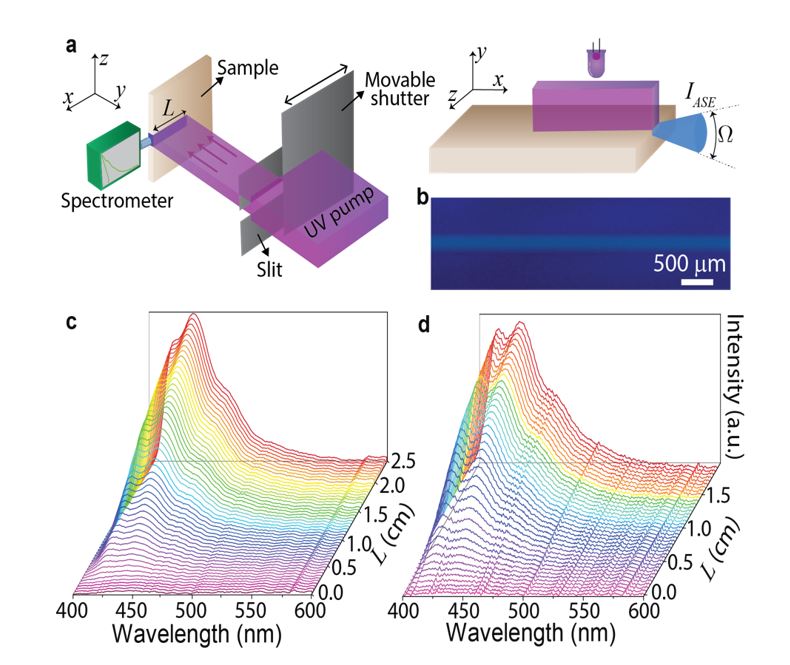Visible-light communications (VLCs) based on white light-emitting diodes (LEDs) are a low-cost and energy-efficient alternative solution to wireless communications. As white LEDs use a combination of a long-lived yellow emission combined with the faster response of a blue emitting LED, VLC technology requires amplification of the blue component to improve the signal-to-noise ratio. Here, we demonstrate the fabrication and application of planar and channel waveguides based on a blue-emitting poly(fluorene) incorporated into di-ureasil organic-inorganic hybrid polymers for optical amplification in VLC. The di-ureasil host is a UV self-patternable material, which can be exploited to use UV-laser direct writing to directly pattern channel waveguides with a larger refractive index within the material, thus enabling confinement and optical guidance of the blue-emission from the poly(fluorene). A maximum optical gain efficiency of 1.62±0.02 cm∙µJ−1 was obtained, which is among the highest values reported to date. Our work highlights the potential of organic-inorganic hybrid polymer waveguides a cost-effective optical amplification materials for VLC based on white light-emitting diodes.
Figure: The optical gain is determined using the variable stripe length technique. (a) Schematic representation of the experimental set-up. (b) Optical microscope image showing the channel waveguide written with 120 µJ∙pulse−1 on the PBS2-M surface, under UV radiation. (c-d) Emission spectra for different stripe lengths in the planar and channel waveguide, respectively. Integration of this data enables the determination of the amplified spontaneous emission and calculation of the optical gain coefficients for the waveguide.
A. Bastos, B. McKenna, M. Lima, P. André, L. D. Carlos, R. C. Evans and R. A. S. Ferreira, “Flexible Optical Amplifier for Visible Light Communications Based on Organic-Inorganic Hybrids” ACS Omega 3 (2018) 13772-13781.

